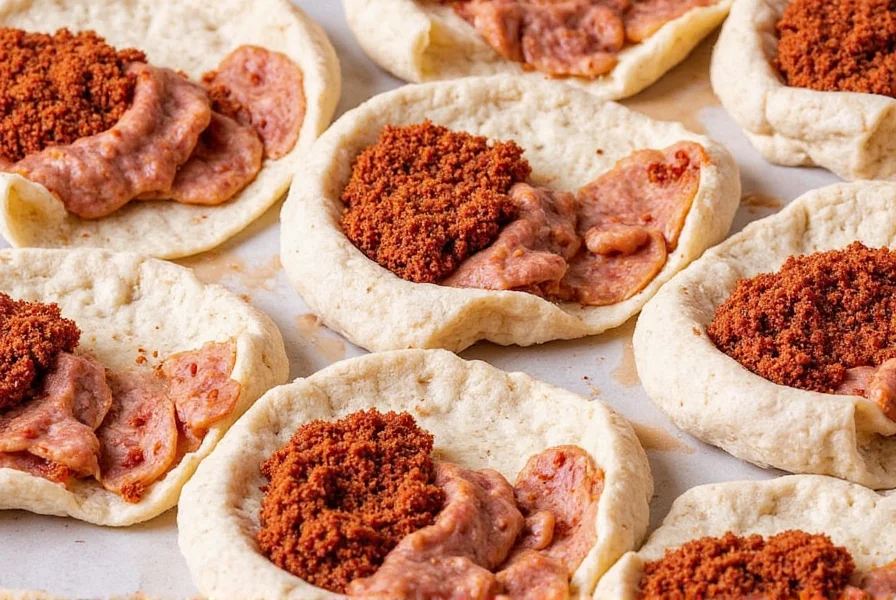Chorizo Chronicles: The Spicy Secrets Behind the World’s Most Addictive Sausage Seasonings
Calling all spice lovers and sausage aficionados! Whether you're a home cook with a cast iron skillet or a culinary pro slicing through charcuterie platters, there's one thing that unites us all: chorizo. This vibrant, smoky, often fiery sausage is as much about the seasonings for chorizo as it is about the meat itself.
In this article, we'll journey through the aromatic world of chorizo seasonings — what they are, why they matter, and how to choose (or blend!) the perfect mix for your next batch. Along the way, we’ll serve up tips, tables, and tasty visuals to keep things spicy and engaging!
Table of Contents
- What Is Chorizo Anyway?
- Why Seasoning Matters in Chorizo
- Core Ingredients in Traditional Chorizo Seasonings
- Types of Chorizo Seasoning Blends
- How to Use Chorizo Seasoning at Home
- Buying Guide: Top Chorizo Seasoning Brands Reviewed
- Conclusion
What Is Chorizo Anyway?

If you're new to the world of chorizo, let’s start with the basics. Chorizo is a type of pork sausage originating from Spain and Portugal, but it has evolved into many regional varieties around the globe — especially in Latin America.
It's usually made by grinding pork (sometimes mixed with fat), stuffing it into casings, and curing or cooking it with a powerful mix of spices. That mix? None other than the legendary seasonings for chorizo.
Why Seasoning Matters in Chorizo
While meat quality and curing techniques play a big role in chorizo’s flavor, it’s the seasoning that really brings the soul. Think of it like music — the meat is the rhythm section, and the spices are the lead guitar solo.
Seasonings don’t just add flavor; they also influence:
- Smokiness: Thanks to paprika (specifically smoked paprika)
- Heat Level: Varies from mild to fire-on-the-tongue hot
- Salt Balance: Essential for preservation and taste
- Preservation: Many traditional blends include natural preservatives like vinegar or wine
Core Ingredients in Traditional Chorizo Seasonings

Let’s break down the holy trinity of chorizo seasoning:
| Spice | Role | Flavor Profile |
|---|---|---|
| Smoked Paprika (Pimentón) | Signature smoky backbone | Earthy, woody, campfire notes |
| Garlic Powder / Fresh Garlic | Depth & savory richness | Pungent, umami, garlicky kick |
| Sea Salt | Balancing act & curing agent | Clean salinity |
Optional but Common Add-Ons
Depending on the style (Spanish vs Mexican vs Argentinean), you may also see:
- Cayenne or chili powder
- White wine or red wine vinegar
- Oregano
- Black pepper
- Fennel seeds (in some regions)
- Aniseed (for licorice notes)
Types of Chorizo Seasoning Blends
Here’s a quick visual breakdown of common chorizo seasoning types:
| Type | Origin | Main Spices | Heat Level |
|---|---|---|---|
| Spanish (Cured) | Spain | Smoked paprika, garlic, salt | Mild |
| Mexican (Fresh) | Mexico | Dried chili, vinegar, oregano | Medium-Hot |
| Argentinean | Argentina | Garlic, paprika, cumin | Medium |
| Portuguese (Chouriço) | Portugal | Smoked paprika, garlic, wine | Mild |
How to Use Chorizo Seasoning at Home
You don’t need to be a sausage-making expert to enjoy the magic of chorizo seasonings. Here are three fun ways to use them:
1. DIY Chorizo Sausages
Grind pork shoulder and fat, mix with seasoning blend, stuff into casings, and either cure or cook immediately.
TIP: For Spanish-style chorizo, ferment and air-dry for several weeks. For Mexican-style, cook fresh in a skillet or grill.
2. Spice Up Everyday Dishes
Use chorizo seasoning as a rub or base for:
- Rice dishes (think paella!)
- Scrambled eggs
- Roasted potatoes or veggies
- Bean soups or stews
3. Create Fusion Flavors
Blend chorizo seasoning with unexpected ingredients for fusion flair:
- Chorizo + Gouda = amazing grilled cheese
- Chorizo + Sweet Potato = roasted bowl magic
- Chorizo + Pasta = bold, rustic ragu
Buying Guide: Top Chorizo Seasoning Brands Reviewed
If you’re not quite ready to make your own blend, here are five top-rated options that bring the heat — and flavor — straight to your kitchen.
| Brand | Best For | Key Features | Pros | Cons |
|---|---|---|---|---|
| La Flor Spanish Chorizo Seasoning | Traditional Spanish cured sausage makers | Uses pimentón de la Vera (smoked paprika), no fillers | Authentic flavor, great for aging | Harder to find in mainstream stores |
| McGill’s Chorizo Blend | Home cooks making Mexican-style chorizo | Includes chili powder, oregano, garlic, and vinegar | Easy to use, widely available | Contains anti-caking agents |
| Frontier Co-op Organic Chorizo Mix | Health-conscious cooks | Organic paprika, garlic, sea salt | Non-GMO, vegan-friendly | Pricey compared to standard mixes |
| Spice Supreme DIY Chorizo Kit | Hobbyists & DIY sausage makers | Includes raw spices and instructions | Educational, customizable | Takes time to mix and prep |
| Herbs & Spices Co. Smoked Chorizo Rub | Grilling and roasting | Ready-to-use, smoky flavor | Perfect for veggie chorizo substitutes | Less intense than traditional blends |
Pro Tips When Buying
- Check for real paprika – not “red pepper” or “oleoresin.”
- Avoid artificial preservatives if possible.
- Read labels for allergens and additives.
- Buy in small batches to test before committing to large quantities.
Conclusion: Let the Chorizo Love Continue
The magic of chorizo lies in its bold, layered flavors — and those come directly from the seasonings for chorizo. Whether you're curing your own sausages or spicing up a weeknight dinner, understanding these blends opens the door to global flavor adventures.
So go ahead — grab a pack (or a handful of spices), get creative, and make every meal taste like it came straight from a tapas bar or taco stand. ¡Buen provecho!










 浙公网安备
33010002000092号
浙公网安备
33010002000092号 浙B2-20120091-4
浙B2-20120091-4